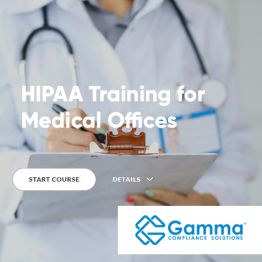Medical offices are subject to numerous regulations designed to protect patients and staff. Two of the most important regulations are OSHA (Occupational Safety and Health Act) and HIPAA (Health Insurance Portability and Accountability Act). While OSHA focuses on workplace safety, HIPAA governs the privacy and security of patient health information.
Medical offices and other healthcare providers often find themselves navigating the guidelines pertaining to OSHA and HIPAA to maintain compliance and ensure a safe and secure environment. Explore some of the ways OSHA and HIPAA intersect in medical offices and the importance of each.
OSHA in Medical Offices
OSHA regulations protect healthcare employees and their patients from workplace hazards. Medical offices must adhere to strict guidelines for navigating bloodborne pathogens, accessing personal protective equipment, and training employees in safety practices.
Additionally, hazard communication standards require offices to inform and train employees on the risks associated with chemicals and materials in the workplace. Emergency action plans are another crucial OSHA requirement, outlining procedures for medical offices to follow in the event of a fire, natural disaster, or other emergency situations. Failure to comply with OSHA standards can result in penalties and increased risks to employee safety.
HIPAA in Medical Offices
HIPAA is the foundation of safeguarding patient health information and ensuring confidentiality. Medical offices must comply with the Privacy Rule, which protects the use and disclosure of patient information, and the Security Rule, which outlines technical, administrative, and physical safeguards for electronic health records.
Practices must also understand and follow the Breach Notification Rule, which requires organizations to notify their patients in the event of a data breach that jeopardizes protected health information. Failing to meet HIPAA requirements can lead to significant legal, financial, and reputational consequences for medical offices.
How OSHA and HIPAA Intersect
OSHA and HIPAA often intersect, particularly in scenarios where workplace safety overlaps with patient privacy. For example, during an emergency that involves accessing patient records, offices must manage the need for quick, lifesaving actions with the responsibility to protect sensitive health information.
Similarly, when managing exposure incidents to bloodborne pathogens, medical staff must document and address hazards while protecting the privacy of involved patients and employees. Training medical staff in both OSHA and HIPAA compliance guidelines is another area where these topics can intersect.
Compliance Strategies
To ensure compliance with both OSHA and HIPAA, medical office managers must adopt a proactive approach. Regular staff training helps employees understand the distinct and overlapping requirements of each regulation. Review and update policies and procedures periodically to align with the latest regulatory updates.
Conducting audits to identify gaps in compliance and addressing them promptly is another effective strategy. Clear documentation and communication among team members further help to maintain a seamless integration of OSHA and HIPAA standards. By prioritizing compliance and OSHA and HIPAA training, medical offices can create a safer, more secure environment for patients and staff.
Prioritizing Compliance and Safety
Understanding intersections and complying with OSHA and HIPAA requirements are fundamental for running an efficient and legally compliant medical office. By prioritizing staff training through certified resources, medical offices can minimize risks and create a workplace where safety and confidentiality coexist seamlessly. Find OSHA and HIPAA training resources for medical and healthcare staff at Gamma Compliance Solutions.



